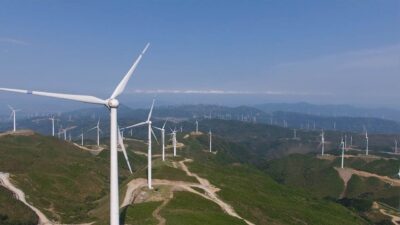>>REAL-TIME UPDATES IN THE WIRE. CLICK HERE<<<
China’s clean energy transition will continue despite the challenges to global energy security posed by the conflict in Ukraine and a return to coal in Europe, and it remains on track to meet its carbon goals, energy officials said on Wednesday.
China’s clean energy has been developing rapidly and installed capacity of renewable energy power exceeded 1.1 billion kW in 2021, accounting for 45.8% of the total installed power capacity, increasing by 14 percentage points from 2014, said Zhang Jianhua, head of the National Energy Administration (NEA), at a new briefing on Wednesday.
China’s installed capacity of wind power, solar power, hydro power and biomass power have ranked the top in the world for several years, and installed capacity of nuclear power reached 83.35 million kW last year, ranking second globally, he said.
In 2021, installed capacity of renewable power increased by about 130 million kW and in the first half of this year, newly installed capacity of non-fossil energy sources exceeded 50 million kW, he said, adding that by 2025, the proportion of renewable energy in the total energy consumption will reach around 18%.
China’s renewable power generation reached 2.49 trillion kWh in 2021, accounting for 29.9% of the country total power consumption last year, increasing by 4.7 percentage points from that in 2014, he said.
From now until 2030, the proportion of non-fossil energy in the total energy consumption is expected to increase by an average of 1 percentage point per year until 2030, and China has confidence and ability to achieve carbon-peaking target by 2030, he said.
He noted that the proportion of coal in the total primary energy consumption falling to 56% in 2021 from 65.8% in 2014, sliding by an average of 1.4 percentage point per year, marking the fastest drop in history.
In addition, China’s energy consumption per unit of GDP has declined by 20% from 2014-level and an annual growth of 2.9% in energy consumption has supported GDP growth of 6.2%, said Zhang.

